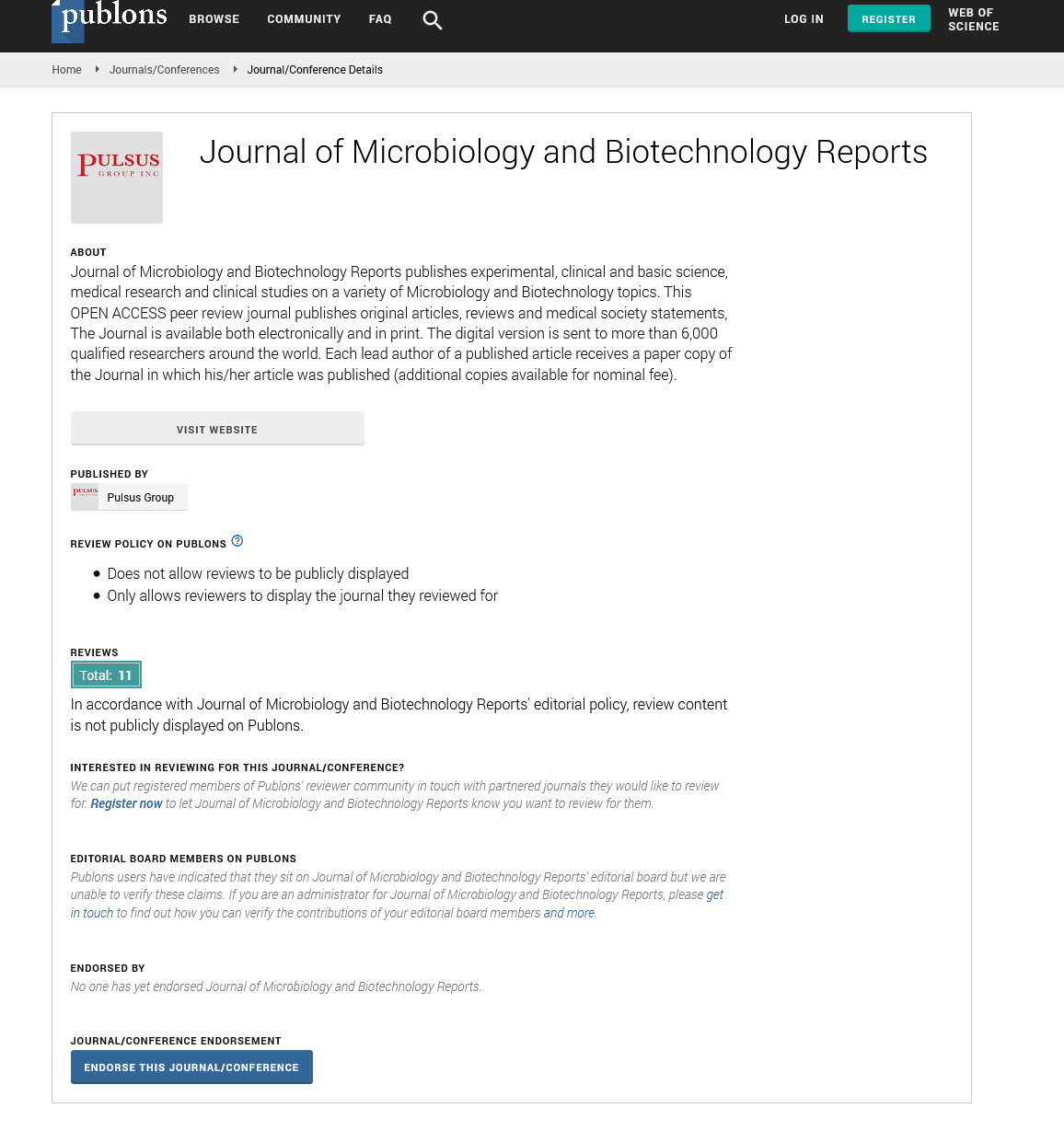
Sign up for email alert when new content gets added: Sign up
Oncogenic viruses and recombinant vaccines: HPV and HCV
9th International Webinar on Biotechnology Research
February 25, 2022 | Webinar
Rachel siqueira de queiroz simoes
Institute of Technology in Immunobiologicals, Brazil
ScientificTracks Abstracts: J Mic Bio Rep
Abstract :
Oncogenic viruses, mainly human papillomavirus (HPV) and hepatitis C virus (HCV), play a key role in the development the new biopharmaceuticals and vaccines. Papillomaviruses are constituted of a closed circular double-stranded DNA genome, are non-enveloped, non-segmented, with approximately 8 kb. HPV is the most common sexually transmitted disease and have been described in the alphapapillomavirus genus. More than 200 HPV genotypes and several HPV types have been associated to oral lesions (Heck ́s disease, oropharyngeal carcinoma, laryngeal papillomas), anogenital warts (Bowenoid papulosis, Buschike- Lowenstein tumor), Epidermodysplasia verruciformis (Plane warts, Pityriasis-like plaques, or squamous cell carcinomas of sunexposed skin). HPV vaccination is the best preventive strategy against cervical cancer, cervical intraepithelial neoplasia and genital warts. Recently, virus‒like particles (VLP) independently of the viral genome have been used since some viral particles have the ability to self‒assembling. So, a recombinant DNA technology has allowed the development of prophylactic vaccines for HPV. Papillomaviruses can be also used as viral vectors for gene therapy and new therapeutic targets have been successfully applied by recombinant DNA methods. Viral vectors such as lentiviruses are also used as plasmids in cloning projects and will also be addressed. The HCV is a worldwide public health problem that affects more than 70% of the 170 million people with chronic hepatitis, and leads to severe fibrosis and cirrhosis, hepatic failure, or hepatocellular carcinoma. The hypervariable region 1 (HVR1) located in the N‒terminus end of the E2 envelope protein in a region of 27 amino acids is relevant to generate HCV neutralizing antibodies. E2 envelope protein of HCV is also the target of several neutralizing monoclonal antibodies and some amino acid positions are conserved despite high degree of genomic variability. However, the high variability of this antigenic fragment represents the major obstacle in the development of an HCV vaccine. Novel biotechnological approaches such as chimeric vaccines using conserved peptides are promising peptide vaccine alternatives against HCV infection. Likewise, therapeutic antibodies and introduction of biosimilars in the technology transfer process will also be a crucial key in biotechnological advances.
Biography :
Rachel siqueira de queiroz simões graduated in veterinary medicine from the Universidade Estadual do Norte Fluminense darcy ribeiro and master's in animal production from UENF. Ph.D. in animal science, Center for Agricultural Sciences and Technologies, Universidade Estadual do Norte Fluminense Darcy Ribeiro, laboratory of animal health, virology and viruses sector, Veterinary hospital. The laboratory techniques of the doctoral thesis were developed in partnership with the laboratory of animal cytogenetics of the Universidade federal fluminense and the laboratory of genetics of the Butantan Institute. Junior post-doctorate in public health from the Oswaldo Cruz Foundation at the molecular virology laboratory. Specialization in applied ethics and bioethics from Instituto Fernandes Figueira, Fundação Oswaldo Cruz and specialization in Biotechnology from Universidade Estadual de Maringá. Professional experience in virology and genetics, with emphasis on human papillomavirus and animal, working mainly on the following topics: epidemiology, oncobiology, oncogenic viruses, viral infection and molecular biology.




